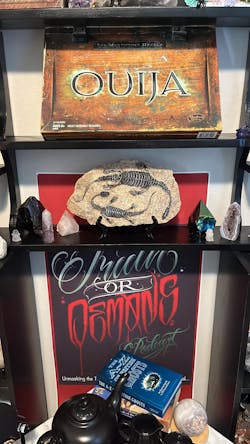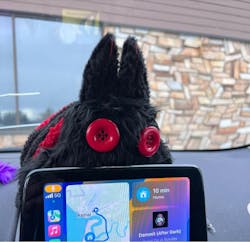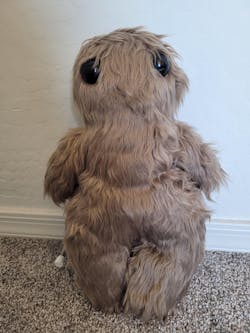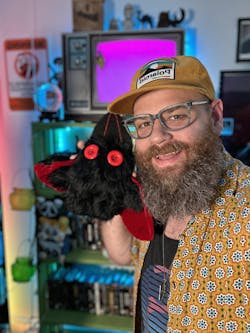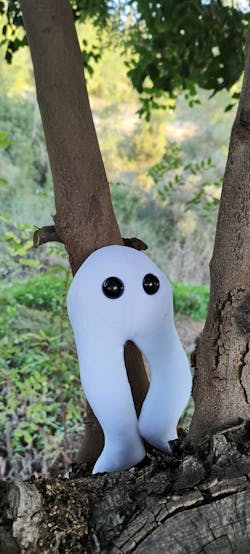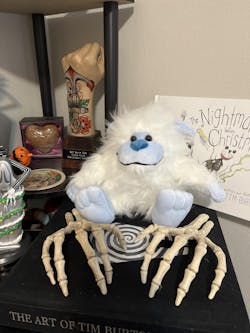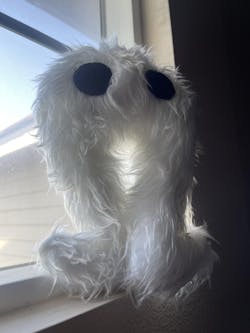Humanoid monsters have long captivated our imaginations, lurking in the shadows of folklore, mythology, and popular culture. These mysterious creatures, often depicted as hybrids between humans and otherworldly beings, continue to intrigue and frighten us. In this article, we will explore the origins, types, legends, psychological fascination, scientific explanations, cultural impact, and more surrounding humanoid monsters.
The Origins of Humanoid Monsters
The origins of humanoid monsters can be traced back to ancient folklore and mythology. Cultures worldwide have stories of creatures that possess human-like characteristics while also possessing supernatural or monstrous traits. These tales often served as cautionary tales or explanations for the unknown. From vampires to werewolves, the concept of humanoid monsters has evolved over centuries.
Types of Humanoid Monsters
3.1 Vampires
Vampires are perhaps the most iconic humanoid monsters. Legends depict them as immortal beings who sustain themselves by feeding on the blood of the living. With their pale skin, fangs, and aversion to sunlight, vampires have become a staple of horror literature and cinema.
3.2 Werewolves
Werewolves, also known as lycanthropes, are creatures that possess the ability to transform into wolves or wolf-like creatures. These shape-shifting beings are often associated with the full moon and embody the duality of human and animal nature.
3.3 Zombies
Zombies are reanimated corpses that feed on the flesh of the living. Originating from Haitian folklore, zombies have gained immense popularity in modern culture, particularly in the horror genre. They are often portrayed as mindless creatures driven by an insatiable hunger.
3.4 Frankenstein's Monster
Frankenstein's Monster, inspired by Mary Shelley's novel, is a humanoid monster created through scientific experimentation. Pieced together from various body parts, the creature grapples with its identity and place in society, raising questions about the nature of humanity.
3.5 Golems
Golems are creatures from Jewish folklore, typically created from inanimate materials such as clay or mud. These powerful beings serve as protectors or enforcers and are brought to life through mystical rituals. Golems often explore themes of power and responsibility.
Legends and Folklore Surrounding Humanoid Monsters
4.1 Vampire Legends
Vampire legends have existed for centuries across different cultures. From the ancient tales of the Mesopotamian vampire-like creature "Lilith" to the infamous Count Dracula of Bram Stoker's novel, vampires have evolved into complex characters embodying both fear and seduction.
4.2 Werewolf Folklore
Werewolf folklore can be found in various cultures, including Norse, Greek, and Native American mythology. These stories often depict individuals cursed to transform into wolves or wolf-like creatures, exploring themes of identity, control, and the primal nature of humanity.
4.3 Zombie Myths
Zombie myths originated in Haitian voodoo traditions and were associated with the concept of reanimation. Modern interpretations, influenced by movies and literature, have transformed zombies into relentless hordes, reflecting societal fears and anxieties.
The Popularity of Humanoid Monsters in Media and Entertainment
Humanoid monsters have found their place in various forms of media and entertainment, captivating audiences worldwide.
5.1 Movies
The film industry has produced countless movies featuring humanoid monsters. From classic horror films like "Nosferatu" and "The Wolf Man" to modern blockbusters such as the "Twilight" series and "Resident Evil" franchise, these creatures continue to thrill and terrify audiences.
5.2 Television Series
Television series like "Buffy the Vampire Slayer," "True Blood," and "The Walking Dead" have brought humanoid monsters into our living rooms. These shows explore the complexities of these creatures' existence and their interactions with humans.
5.3 Literature
Humanoid monsters have been a recurring theme in literature for centuries. From Gothic classics like "Dracula" and "Frankenstein" to contemporary novels like "Interview with the Vampire" and "World War Z," these stories delve into the darkness within humanity and the fear of the unknown.
5.4 Video Games
Video games provide an interactive platform for players to engage with humanoid monsters. Games like "Resident Evil," "Silent Hill," and "The Elder Scrolls V: Skyrim" allow players to immerse themselves in eerie and thrilling worlds inhabited by these creatures.
The Psychological Fascination with Humanoid Monsters
Humanoid monsters hold a significant psychological fascination for individuals, tapping into deep-seated fears and intriguing our minds.
6.1 Fear and Intrigue
Humanoid monsters evoke a primal fear within us, playing on our fear of the unknown, darkness, and death. The uncertainty surrounding these creatures adds an element of intrigue, compelling us to explore the boundaries of our fears.
6.2 Symbolism and Archetypes
Humanoid monsters often serve as symbolic representations of our inner struggles and desires. They embody archetypes such as the seductive vampire or the wild, untamed werewolf, reflecting aspects of human nature that we may repress or find intriguing.
6.3 Exploration of Human Nature
By exploring the monstrous side of humanity, humanoid monsters raise profound questions about our own nature. They challenge societal norms, morality, and our understanding of what it means to be human, allowing us to delve into the depths of our psyche.
Scientific Explanations and Rationalizations
While humanoid monsters exist in folklore and popular culture, scientific explanations offer alternative perspectives on these creatures.
7.1 Medical Conditions and Disorders
Some medical conditions and disorders can contribute to the creation of real-life stories resembling humanoid monsters. Conditions such as hypertrichosis, which causes excessive hair growth, and porphyria, which can lead to photosensitivity, have been suggested as potential explanations for werewolf and vampire legends.
7.2 Psychological Explanations
Psychological conditions such as clinical lycanthropy, a rare delusional disorder, can cause individuals to believe they transform into animals. This disorder may have influenced the werewolf legends and the concept of shape-shifting creatures.
7.3 Genetic Mutations
Genetic mutations and abnormalities can give rise to physical characteristics that resemble the traits of humanoid monsters. Rare conditions like ectrodactyly, or "lobster claw syndrome," and hyperdontia, excessive teeth growth, can contribute to the creation of real-life "monster-like" appearances.
Debunking Myths and Misconceptions
While humanoid monsters exist in folklore and popular culture, it's essential to separate fact from fiction and address common myths and misconceptions.
8.1 The Reality of Vampires
Despite the enduring vampire legends, there is no scientific evidence to support the existence of immortal bloodsucking creatures. Vampirism, as portrayed in folklore and popular culture, remains firmly in the realm of fiction.
8.2 Origins of Werewolf Legends
Werewolf legends originated from mythological and cultural beliefs rather than real individuals transforming into wolves. While some medical conditions may contribute to the perception of werewolf-like traits, the phenomenon of shape-shifting into actual wolves is not scientifically substantiated.
8.3 Understanding the Zombie Phenomenon
Zombies, as portrayed in movies and literature, do not exist as reanimated corpses craving human flesh. The idea of zombies arose from Haitian voodoo traditions, and the concept of a zombie apocalypse is purely fictional.
The Cultural Impact of Humanoid Monsters
Humanoid monsters have left an indelible mark on popular culture, influencing various aspects of society.
9.1 Halloween and Horror Culture
Humanoid monsters, with their association with the supernatural and horror, have become synonymous with Halloween celebrations. The holiday's traditions and symbols often feature iconic creatures like vampires, werewolves, and zombies.
9.2 Folklore Preservation
Through the continued interest in humanoid monsters, folklore and mythologies are preserved and passed down through generations. These stories provide insights into cultural beliefs, fears, and values, contributing to the tapestry of human history.
9.3 Social Commentary
Humanoid monsters in literature, movies, and other forms of media often serve as vehicles for social commentary. They can symbolize societal anxieties, explore themes of otherness and discrimination, or critique aspects of human behavior and morality.
Conclusion
Humanoid monsters have captivated our imaginations for centuries, weaving tales of fear, intrigue, and self-reflection. From the ancient legends of vampires and werewolves to the modern portrayal of zombies and golems, these creatures continue to spark our curiosity and compel us to explore the depths of our psyche. Whether they exist in folklore, popular culture, or the realms of our imagination, humanoid monsters remain a testament to the enduring power of storytelling and our fascination with the unknown.
FAQs (Frequently Asked Questions)
11.1 Are humanoid monsters real?
No, humanoid monsters are fictional creatures that exist in folklore, mythology, and popular culture. While they may be inspired by certain aspects of the human experience, there is no scientific evidence to support the existence of these creatures.
11.2 Can humanoid monsters be friendly?
In popular culture, humanoid monsters are often depicted as villains or sources of fear. However, creative interpretations can present friendly or sympathetic versions of these creatures. Ultimately, their portrayal depends on the narrative and artistic choices.
11.3 Why are humanoid monsters often depicted as villains?
Humanoid monsters are frequently depicted as villains due to their association with fear, danger, and the unknown. They serve as antagonists to create tension and drive the narrative, highlighting the contrast between their monstrous nature and human protagonists.
11.4 Are there any real-life cases of humanoid monster sightings?
No credible scientific evidence exists to support the existence of real-life humanoid monsters. Sightings and encounters with such creatures are largely confined to folklore, urban legends, and fictional stories.
11.5 How do humanoid monsters impact popular culture?
Humanoid monsters have had a significant impact on popular culture, shaping genres such as horror and fantasy. They have become iconic characters in movies, television series, literature, and video games, influencing fashion, celebrations like Halloween, and sparking discussions on human nature and societal issues.
 Sold out
Sold out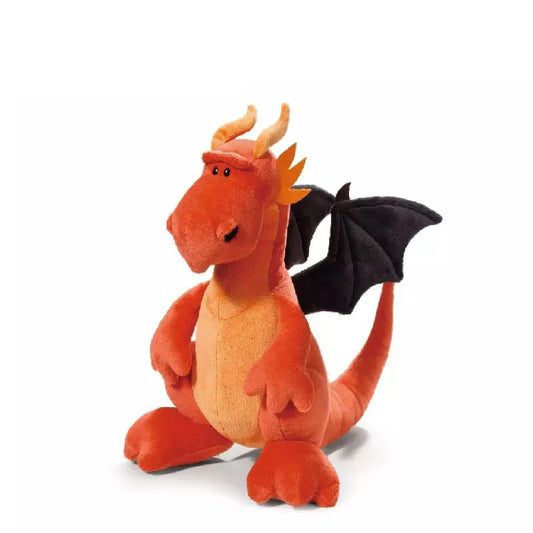 Sold out
Sold out










